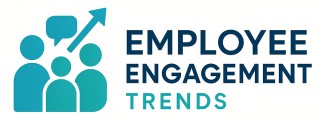
Understanding the Importance of an Engagement Calendar
Why an Engagement Calendar Matters
In today's dynamic work environment, keeping employees engaged is more crucial than ever. An engagement calendar serves as a strategic tool to foster a vibrant company culture and enhance employee engagement. By planning and organizing activities throughout the year, companies can create a work life that is both fulfilling and productive.
Boosting Employee Morale and Wellness
Engagement calendars are not just about scheduling events; they are about creating opportunities for employees to feel valued and appreciated. From celebrating employee appreciation days to recognizing awareness months, these calendars can significantly boost morale. Incorporating activities that focus on mental health and wellness can also promote a healthier work environment.
Encouraging Team Building and Collaboration
Regularly scheduled team building activities can encourage employees to collaborate more effectively. Whether it's a virtual event or a day spent in a national park, these experiences help strengthen team bonds. By including a variety of engagement activities, companies can ensure that all employees feel included and motivated.
Creating a Year-Round Engagement Strategy
To maintain high levels of engagement, it's important to have a year-round strategy. This involves planning events that align with the company's goals and values. By doing so, companies can ensure that their engagement efforts are consistent and impactful. For more insights on maintaining a dynamic workplace, consider exploring the dynamics of team temperature.
Key Elements of a Successful Engagement Calendar
Crucial Components for an Effective Engagement Calendar
Crafting a successful engagement calendar requires thorough attention to detail and an understanding of the elements that truly foster employee engagement. A well-curated calendar can transform a company’s work culture by strategically organizing employee engagement activities and events throughout the year. To ensure the calendar resonates with your team, consider these key components:- Variety of Engagement Activities: Incorporating a mix of activities that cater to a wide range of employee interests and preferences is essential. This includes team-building exercises, professional development workshops, wellness initiatives, and appreciation events.
- Tie-in National and Awareness Months: Utilize occasions such as history month, mental health awareness month, and acts of kindness initiatives to promote inclusivity and educate employees while encouraging participation.
- Scheduled Celebrations and Recognition: Celebrate employee achievements regularly, such as birthdays, work anniversaries, or project accomplishments, to foster a culture of appreciation. This could involve low-cost events like virtual gatherings or designated days for employee appreciation.
- Integration of Well-being Activities: Prioritize employee health and wellness by embedding activities like physical fitness challenges or relaxation sessions, which improve both physical and mental health.
- Flexibility to Adapt and Evolve: An engagement calendar should not be static. Regularly evaluate its effectiveness and remain open to changes. Introduce innovative concepts such as lunch-and-learn sessions to keep the calendar dynamic and impactful.
- Alignment with Company Goals: Each activity should not only be enjoyable but align with and support the broader company culture and values. This ensures that the calendar contributes to the organization’s objectives and enhances the work environment.
Tailoring the Engagement Calendar to Your Team's Needs
Adapting the Calendar to Meet Your Team's Unique Needs
Crafting an engagement calendar that truly resonates with your team involves more than listing activities and dates. The key to success lies in tailoring the calendar to cater specifically to your team’s unique dynamics, interests, and work environment. Here's how you can ensure that your engagement activities hit the mark:- Understand Your Team's Preferences: Engage with your employees to gather insights into what types of activities and events they are genuinely interested in. This could include surveys, one-on-one meetings, or casual discussions during team meetings. By understanding their preferences, you’ll be more likely to add engagement activities that employees feel enthusiastic about.
- Consider Different Work Arrangements: In a hybrid or remote work setup, virtual engagement activities can be interspersed with physical ones to ensure inclusivity. Plan virtual team-building exercises or wellness events that accommodate different time zones and work schedules, ensuring everyone has a chance to participate throughout the year.
- Align with Company Culture: The engagement calendar should reflect and reinforce your company culture. You could incorporate events like Employee Appreciation Day, history month celebrations, or acts of kindness week to promote and celebrate diversity, inclusion, and the values your company holds dear.
- Leverage National Days and Months: Use national awareness days or months as an opportunity to engage employees in activities that promote health and well-being. For instance, during mental health awareness month, you could organize workshops or share resources that encourage employees to prioritize their mental health.
- Integrate Professional Development: Incorporate activities that foster growth and learning. Host virtual webinars, workshops, or "lunch and learn" sessions where employees can share knowledge or learn new skills, adding value to their work life and the company's growth.
Incorporating Feedback into Your Engagement Calendar
Engaging Feedback and its Role in Calendar Development
In order to create a calendar that resonates with your team, incorporating feedback from your employees is crucial. When employees feel heard, they are more likely to engage with the activities outlined in your engagement calendar. By actively seeking input, you show that the company values their opinions and fosters a more inclusive work environment. One approach to gathering feedback is through regular surveys. Consider setting aside specific days each month to conduct these surveys, encouraging employees to share their thoughts on past events and suggest ideas for future activities. This can lead to the inclusion of activities that might otherwise be overlooked, such as a mental health awareness month or a virtual national park tour. Another method to engage employees is through open discussions or meetings. These forums can provide an opportunity for employees to voice their preferences directly and discuss potential ideas. This interactive approach supports transparency and acts as a form of professional development, as team members learn to communicate effectively in a group setting. Additionally, it's important to remember that an engagement calendar should be dynamic. It should evolve based on the feedback received. This means regularly updating and adjusting the calendar throughout the year. Such responsiveness can encourage employees to remain engaged and feel appreciated. Ultimately, incorporating feedback into your engagement calendar not only enhances company culture but can significantly contribute to the overall wellness and satisfaction of your team. By committing to a feedback-driven process, you invest in a year-round, evolving strategy that celebrates employee appreciation and creates a positive workplace culture.Overcoming Challenges in Implementing an Engagement Calendar
Strategies for a Smooth Transition
Implementing an employee engagement calendar requires a thoughtful approach to ensure it meets its objectives without causing unnecessary disruption to your team's daily schedules. Still, obstacles may arise during the implementation phase. Below are strategies to tackle these challenges effectively:Effective Communication and Education
- Open Dialogue: Encourage employees to share their thoughts and concerns about the new engagement calendar. Addressing these concerns early can prevent misunderstandings and foster a sense of inclusion.
- Training Programs: Organize workshops or virtual meetings to educate the team about the benefits of the engagement activities included in the calendar. Highlight how it aligns with company culture and professional development goals.
Balancing Workload with Engagement Activities
- Schedule Smartly: Avoid overloading employees by meticulously planning activities around busy times of the year. Consider work-life balance when fitting activities into the calendar.
- Flexibility: Be prepared to adjust the calendar as needed. Recognizing periods of high workload, such as the end of the fiscal year, allows for tactful rescheduling of engagement events.
Inclusivity and Diversity
- Cultural Sensitivity: Ensure the calendar includes activities celebrating various events like national holidays or awareness months that could resonate with the diverse backgrounds within your team.
- Community Inspired: Consider adding events that highlight acts of kindness or environmental consciousness, like exploring a national park or honoring an artist celebrated for capturing natural beauty, to promote a broader sense of belonging.
Measuring Success and Iteration
- Feedback Loop: Regular check-ins to gather feedback on the engagement calendar can provide insights on what's working and what needs adjustment.
- Data-Driven Decisions: Use collected data to measure improvement areas in employee health and wellness, and willingness to participate in team building activities to gauge the calendar's effectiveness.
Measuring the Impact of Your Engagement Calendar
Evaluating the Success of Your Engagement Calendar
Creating an engagement calendar is only part of the journey; understanding its impact is where real progress lies. Regularly measuring the effectiveness of your calendar can provide invaluable insights into how these initiatives resonate with your team and contribute to their work experience. Consider the following points to gauge the success of your employee engagement efforts:- Track Attendance and Participation: Monitor attendance during scheduled activities. Higher participation rates signify that your team finds these events appealing and sees value in them. Conversely, low turnout may suggest either timing issues or a mismatch with employees' interests.
- Gather Employee Feedback: Encourage employees to share their thoughts on the activities, either through surveys or casual discussions. This feedback is vital in realigning your calendar to better match the team's desires and enhancing engagement.
- Measure Employee Engagement Levels: Utilize tools or surveys to regularly assess engagement levels. By comparing these metrics before and after implementing your engagement activities, you can better understand their impact on morale and the workplace culture.
- Assess Specific Outcomes: Look for improvements in areas such as team building, communication, or mental health. Initiatives like wellness programs or acts of kindness can foster these positive changes over time, making your workplace environment more supportive and inclusive.













